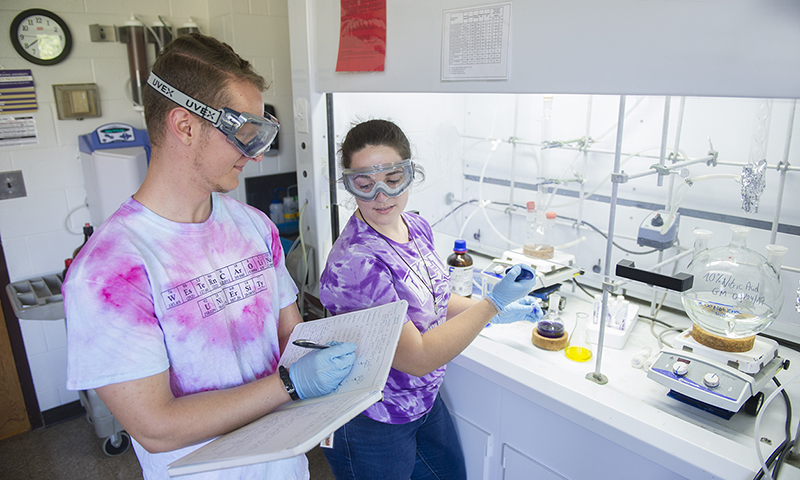Nanoparticles to Detect Cancer Cells

Research hopes to one day assist with cancer imaging
Using nanotechnology-related imaging is a new technology that is only used in research labs, said Western Carolina University associate professor of bioinorganic chemistry Channa De Silva. His lab happens to be one of those places.
De Silva is currently using the technology on a project that involves making nanoparticles with hopes of assisting with cancer imaging.
“That’s the ultimate goal,” he said. “We want to be able to send a nanoparticle to cancer cells and image the cancer cell at an early stage. We make the nanoparticle and then we attach a protein or peptide so it will recognize a certain cancer cell.”
Aaron Lipchak, a chemistry student from Pinnacle, has been working on the project with De Silva. He designed the materials used for testing.
“By using a magnetic particle that’s attached to the peptide, we can have the peptide attached to the cell and then the nanoparticle on the other end of the peptide,” Lipchak said. “If this material was somehow applied to melanoma cells, you could detect whether that cancer cell was present or not. That’s the ultimate goal. We’re not there yet.”
De Silva said they are trying to learn whether they can apply the same techniques for a real medicinal-type setting or a clinical setting in the future, likely 20 to 30 years from now.
“We learn a lot of things about how they behave and whether we can incorporate them into those types of technologies in the future,” De Silva said. “Students learn how to make (the nanoparticles) and how to do basic testing, and how to analyze these particles.”
Another project involves trying to develop nanoparticles that inhibit bacteria growth. This would help limit the spread of infections and diseases in places like hospitals. These nanoparticles could be used in clinical settings in things like a mask, clothing or hospital bedding, De Silva said.
“In the presence of our nanoparticles, the bacteria doesn’t grow closer to the nanoparticles,” De Silva said. “We inhibit their growth. If you can incorporate the particles in a bed sheet, you will not have any bacteria growing. Or if you have some bacteria infection spreading, you can minimize those things.
“This summer, I’m going to be looking at chemically connecting the nanoparticles to fabric rather than physically connecting,” said Kaitlyn Brasecker, a chemistry student from Morganton.
De Silva said his research allows graduate students to develop analytical skills that have successfully landed them jobs after graduation and admittance into post-doctorate programs.
“Graduate students are more independent,” he said. “They have their own big project. I train them to be that way so they are ready for industry and higher studies.”